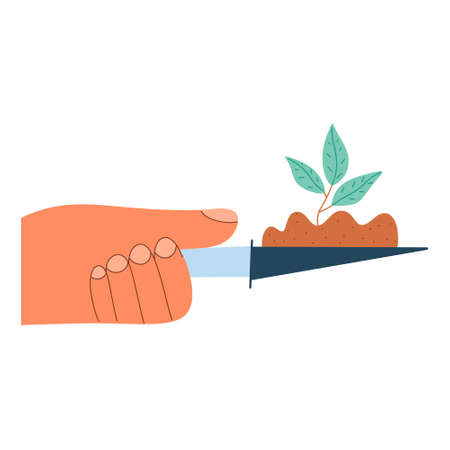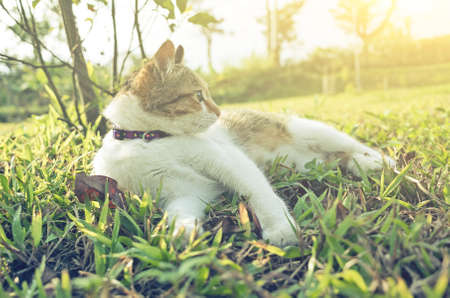1. Understanding the Risks: Common Toxic Plants for Pets
When creating a beautiful garden, its important to consider the safety of your pets. Many common plants can be toxic to cats and dogs, causing mild to severe health issues if ingested. Knowing which plants pose a threat can help you make better choices for a pet-friendly outdoor space.
Common Toxic Plants and Their Effects
Some plants that add beauty to your garden may also bring unexpected dangers to your furry friends. Below is a list of common toxic plants along with symptoms of poisoning.
| Plant Name | Toxicity Level | Symptoms of Poisoning |
|---|---|---|
| Lilies (Lilium spp.) | Highly toxic to cats | Vomiting, lethargy, kidney failure |
| Aloe Vera | Mild to moderate toxicity for pets | Diarrhea, vomiting, tremors |
| Sago Palm | Highly toxic to cats and dogs | Liver failure, vomiting, seizures |
| Daffodils | Toxic to pets | Nausea, diarrhea, heart issues |
| Tulips | Mild to moderate toxicity for pets | Irritation in mouth, drooling, stomach upset |
| Ivy (Hedera spp.) | Mildly toxic to pets | Mouth irritation, difficulty breathing, vomiting |
| Azaleas & Rhododendrons | Toxic to both cats and dogs | Lethargy, vomiting, potential coma or death in severe cases |
| Tobacco Plant (Nicotiana spp.) | Toxic to pets if ingested | Tremors, increased heart rate, respiratory distress |
| Cyclamen | Toxic to pets (especially the roots) | Drooling, vomiting, potential heart problems in large amounts |
| Castor Bean Plant (Ricinus communis) | Highly toxic to pets and humans alike | Tremors, seizures, organ failure in severe cases |
Why Are These Plants Dangerous?
The toxins found in these plants can affect different parts of a pet’s body. Some cause gastrointestinal distress such as nausea and diarrhea, while others impact organs like the liver or kidneys. In severe cases, ingestion can lead to neurological issues or even fatal consequences.
Cats vs. Dogs: Different Reactions to Toxic Plants
Cats are generally more sensitive than dogs when it comes to plant poisoning. For example, lilies are extremely dangerous for cats but may not have the same effect on dogs. On the other hand, certain plants like sago palms pose an equal risk to both species.
The Importance of Immediate Action
If you suspect that your pet has ingested a toxic plant, contact your veterinarian immediately. Symptoms may take time to appear but early intervention can prevent serious health complications.
Avoiding Toxic Plants in Your Garden Design
The best way to keep your garden safe is by avoiding planting toxic species altogether. If you already have harmful plants in your yard, consider relocating them out of reach or replacing them with pet-friendly alternatives.
2. Safe and Pet-Friendly Plants for Your Garden
Creating a pet-friendly garden doesn’t mean you have to sacrifice beauty. There are plenty of non-toxic plants that can make your outdoor space lush and vibrant while keeping your furry friends safe. Below are some excellent choices for a pet-safe garden.
Non-Toxic Flowers
Brighten up your garden with these colorful, pet-safe flowers:
| Flower | Description |
|---|---|
| Marigold (Tagetes) | A cheerful, low-maintenance flower that adds warm hues to any garden. |
| Pansy (Viola tricolor) | A delicate, cold-tolerant flower available in many colors. |
| Zinnia (Zinnia elegans) | An easy-to-grow plant that attracts butterflies and is safe for pets. |
Pet-Safe Herbs
If you enjoy growing herbs, here are some safe options for both cooking and garden aesthetics:
- Basil: Adds a fresh aroma and is completely pet-friendly.
- Cilantro: A great addition to meals and non-toxic to pets.
- Dill: Easy to grow and safe for curious pets who might take a nibble.
- Sage: A hardy herb that’s both useful in the kitchen and safe for pets.
Paw-Friendly Ground Covers
Avoid sharp or toxic ground covers by choosing these soft and safe alternatives:
- Creeping Thyme: A fragrant, durable ground cover that’s gentle on paws.
- Iris Moss (Sagina subulata): A lush, moss-like plant that creates a soft carpet in shaded areas.
- Bachelor’s Buttons (Centaurea cyanus): A resilient, pet-safe option with beautiful blue blooms.
Tall, Non-Toxic Plants for Structure
Add height and greenery without worrying about toxicity:
- Bamboo (Non-invasive species): Creates privacy while being safe for pets.
- African Violet: A lovely indoor-outdoor plant that thrives in containers.
- Date Palm: A striking plant that provides shade without posing a risk to pets.
Selecting pet-safe plants ensures a beautiful garden where your furry companions can roam freely without danger. By incorporating these non-toxic options, you can create a stunning outdoor space thats both functional and pet-friendly!

3. Creating a Pet-Safe Garden Layout
Designing a garden that is both beautiful and safe for your pets requires careful planning. By incorporating pet-friendly zones, barriers, and designated digging areas, you can create a space where your furry friends can explore without risk.
Establish Safe Zones
Designate specific areas in your garden where your pets can roam freely without encountering toxic plants or other hazards. Use soft grass, pet-safe mulch, and shady spots to make these areas comfortable.
Pet-Friendly Ground Cover Options
| Ground Cover Type | Benefits |
|---|---|
| Clover | Soft on paws, resilient, and non-toxic |
| Bermuda Grass | Durable and safe for pets |
| Cedar Chips | Repels insects and provides a soft surface |
| Artificial Turf | Easy to clean and maintain |
Use Barriers to Protect Plants and Pets
Fencing or raised garden beds can prevent pets from accessing harmful plants while also keeping your garden organized. Consider using decorative fencing, plant cages, or natural hedges as barriers.
Effective Barrier Ideas
- Low Fencing: Helps keep pets out of flower beds without obstructing the view.
- Potted Plants on Raised Surfaces: Keeps potentially toxic plants out of reach.
- Naturally Deterring Plants: Certain pet-safe plants like rosemary or lavender can act as natural barriers.
Create a Designated Digging Area
If your pet loves to dig, provide a specific area where they can satisfy this instinct without damaging your garden. Fill it with soft soil or sand and encourage use with buried toys or treats.
Tips for a Successful Digging Zone
- Choose a shaded spot to keep it cool.
- Add loose soil or sand for easy digging.
- Bury favorite toys or treats to make it exciting.
- Praise and reward your pet when they use the designated area.
A well-planned garden layout ensures that both you and your pets can enjoy the outdoor space safely. By creating secure zones, using protective barriers, and allowing for natural behaviors like digging, you can maintain a thriving garden that accommodates your furry friends.
4. Natural Pest Control Without Harming Pets
Keeping your garden free from harmful pests doesn’t mean you have to rely on chemical pesticides that could be toxic to your pets. Instead, there are plenty of natural and pet-safe alternatives that effectively control pests while keeping your outdoor space eco-friendly.
Pet-Safe Alternatives to Chemical Pesticides
Chemical pesticides often contain ingredients that can be dangerous if ingested or even touched by pets. Fortunately, there are natural solutions that keep pests away without harming your furry friends.
| Chemical Pesticide | Pet-Safe Alternative |
|---|---|
| Insecticides for aphids and mites | Neem oil spray or a mix of dish soap and water |
| Slug and snail bait (which often contains metaldehyde) | Diatomaceous earth or crushed eggshells around plants |
| Mosquito repellents with DEET | Cedarwood oil or citronella plants |
| Chemical weed killers | A mixture of vinegar, salt, and water as a natural herbicide |
Encouraging Beneficial Insects
A great way to control garden pests naturally is by attracting beneficial insects that prey on harmful bugs. Ladybugs, praying mantises, and lacewings help keep populations of aphids, caterpillars, and other plant-damaging insects under control.
How to Attract Beneficial Insects:
- Plant flowers like marigolds, lavender, and dill to attract pollinators and predatory insects.
- Avoid using broad-spectrum pesticides that kill both harmful and beneficial insects.
- Create small shelters using rocks or logs where helpful bugs can thrive.
Pest-Repelling Plants That Are Safe for Pets
Certain plants naturally repel pests while being completely safe for dogs and cats. Consider adding these to your garden:
- Basil: Repels mosquitoes and flies.
- Lavender: Keeps moths, fleas, and mosquitoes away.
- Rosemary: Deters insects like mosquitoes and cabbage moths.
- Lemongrass: A natural mosquito repellent.
Ditching Chemical Fertilizers for Natural Options
Chemical fertilizers may enhance plant growth but can be harmful if ingested by pets. Instead, try these safer options:
| Chemical Fertilizer | Pet-Safe Alternative |
|---|---|
| Synthetic nitrogen-based fertilizers | Compost made from food scraps and yard waste |
| Chemical plant food granules | Epsom salt diluted in water (provides magnesium for plants) |
| Pesticide-infused fertilizer blends | Coffee grounds or banana peels for nutrient-rich soil |
| Lawn fertilizers with added herbicides | Corn gluten meal as a natural weed preventer and fertilizer |
Create a Healthy Balance in Your Garden
A well-balanced garden ecosystem reduces the need for pesticides altogether. By choosing pet-friendly pest control methods, introducing beneficial insects, and using natural fertilizers, you ensure your garden remains a safe haven for both your plants and furry companions.
5. Training Pets to Respect Garden Spaces
Creating a safe and pet-friendly garden isnt just about choosing the right plants—its also about training your pets to respect garden boundaries. Proper training can help prevent them from digging up plants, eating toxic greenery, or damaging your outdoor space. Here are some effective ways to teach your pets how to enjoy the garden safely.
Teach Basic Commands
Training your pet with basic commands like “leave it,” “stay,” and “off” can help keep them out of dangerous areas. Consistent reinforcement and rewards will encourage good behavior.
Essential Commands for Garden Safety
| Command | Purpose |
|---|---|
| “Leave it” | Prevents pets from eating or chewing harmful plants. |
| “Stay” | Keeps pets in designated safe zones. |
| “Off” | Discourages jumping into garden beds or onto fragile plants. |
Create Designated Pet Zones
If your pet loves being outdoors, designate a special area where they can play freely without harming your plants. A small sandbox or a patch of soft grass can be great alternatives to garden beds.
Use Barriers and Deterrents
Physical barriers like low fencing, raised garden beds, or decorative stones can help define off-limits areas. Additionally, natural deterrents such as citrus peels or pet-safe repellents can discourage pets from entering restricted spaces.
Provide Supervised Outdoor Time
Spending time outside with your pet allows you to redirect unwanted behaviors immediately. Encourage them to explore safe areas while gently guiding them away from hazardous spots.
Reward Positive Behavior
Praise and treats go a long way in reinforcing good habits. When your pet stays within their designated area or follows commands, reward them to encourage continued obedience.
Be Patient and Consistent
Training takes time, so be patient and consistent with your approach. Regular practice and positive reinforcement will help your pet learn to respect the garden while enjoying the outdoor space safely.
By teaching your pet proper garden etiquette, you can create a safe and enjoyable environment for both your furry friend and your plants.

